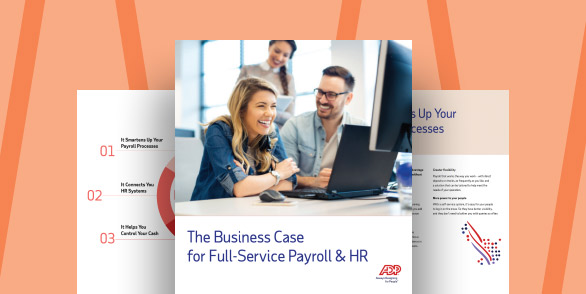Ever-changing employment regulations make HR compliance quite complex. You may have to revise your processes and employee handbook or complete documents – all of which takes time away from running your business. But no matter how busy you are, HR compliance should remain a priority or you run the risk penalties and lawsuits.
What is HR compliance?
HR compliance means adhering to all applicable labor laws. The larger your organization and the more geographic regions you operate in, the more regulations you must comply with. In the face of this challenge, many employers rely on talent management, software, policy training and workflow-enabled processes to protect their business.

What laws does HR need to know?
The number of laws and wage and hour regulations at the federal, state and local levels that HR must know to stay compliant is vast. Some of the more prominent regulations include the:
- Fair Labor Standards Act (FLSA)
- Affordable Care Act (ACA)
- Family and Medical Leave Act
- Title VII of the Civil Rights Act
- Occupational Safety and Health Act (OSHA)
- Equal Pay Act (EPA)
- Americans with Disabilities Act
What is employee compliance?
Employee compliance is achieved when workers are familiar with all of the laws that govern their industry or job and know how to conduct business in an ethical manner. It often requires procedural training and encouragement to learn from mistakes. Simply punishing compliance failures causes fear and anxiety and may lead to workers covering up errors instead of reporting them.
What is the role of HR in compliance?
Because compliance takes an organization-wide effort, HR’s role is to create a culture of integrity. Businesses who do this well often have:
- Consistent employee communication and education
- Executive leaders who are champions of ethics and compliance
- Ways for employees to report unethical activity
- Policies that are applied fairly at every organizational level
HR compliance issues
From hire to termination or retire, HR compliance issues tend to arise throughout the course of the employee lifecycle. Some examples include:
Discriminatory job listings
Recruitment ads shouldn’t use any language that shows preference for a candidate based on protected information or characteristics. This includes, but is not limited to, race, color, religion, sex (including gender identity, sexual orientation and pregnancy), national origin, disability, genetic information or age. Even asking for “recent college graduates” may be considered discriminatory. Online tools are available that can help you write unbiased job descriptions, or see if your company has templates that meet best practice guidelines.
Inappropriate interview questions
During an interview, avoid asking questions that reveal protected characteristics, pry into a candidate’s personal life or disclose affiliations unrelated to the role. Inquiring about any of these topics may not only offend a potential employee, but also can also expose you to employment discrimination lawsuits. Instead, ask questions that let candidates demonstrate their skills. And if a candidate does reveal a disability and makes a reasonable request for accommodations, you can’t refuse to hire him or her on this basis.
Illegal criminal background checks
Background checks should be conducted by someone other than the hiring manager and only after a conditional offer of employment has been made to a candidate. Some cities and states also have “Ban the Box” laws that prohibit employers from asking a candidate about their criminal history before a certain point in the hiring process.
Unsecure documents
Employees and job candidates alike expect their personal information to be kept confidential. Save completed applications, resumes, I-9 forms and other paperwork in a secure location and never leave them lying around the office for others to see. All documentation should be stored appropriately and accessible only by authorized individuals within your organization.
Late new hire reports
Child support agencies rely on the records in the National Directory of New Hires to locate parents who may owe child support. For this reason, you have 20 days to notify your designated state agency when you hire or rehire an employee. The deadline is even shorter in some areas of the country and you may be fined for noncompliance.
Misclassified workers
Because it affects overtime wages and tax payments, misclassifying a worker can sometimes result in steep penalties. To handle classifications properly, you must first distinguish employees from independent contractors. IRS Form SS-8, Determination of Worker Status for Purposes of Federal Employment Taxes and Income Tax Withholding can help if you’re unsure. Next, determine which employees are non-exempt from the Fair Labor Standards Act (FLSA), as they will be entitled to minimum wage and overtime.
Improper training or orientation
Orientation helps new hires get acquainted with your business operations and learn your policies and code of conduct. Employees who understand appropriate behaviors and how to report harassment and other incidents can help limit your risk for lawsuits. It’s also sometimes beneficial to have new employees shadow their coworkers for the first few days so they know how to work safely and productively.
Inaccurate payroll and tax payments
Paying employees correctly and on time is essential to maintaining workforce morale and avoiding wage claims. You also need to calculate payroll taxes and file them with government agencies or risk being audited or fined. Using a payroll service to automate the calculations, tax deductions and payments can help improve accuracy and compliance and may save you time.
Noncompliant leave of absence policies and processes
Employee leave is challenging because you must balance complying with federal, state and local leave laws and maintaining productivity. To reduce your liability, ensure your policies and leave administration processes abide by all applicable regulations.
Unfair pay practices
In addition to the Equal Pay Act, a national law that mandates equal pay for equal work, several states have legislation addressing gender pay inequality. And while you may fully intend to abide by these laws, gender pay gaps can develop inadvertently over time due to recruitment, transfers and promotions. Running regular pay audits under the advice of your counsel can help prevent this scenario.
Inadequate health coverage
Health insurance is a benefit that many employers offer to their employees, but it may also be a requirement depending on the size of your business. If you have 50 or more full-time or full-time-equivalent employees, you are bound by the Affordable Care Act to provide coverage or face penalties. Additionally, the health plan must be affordable and offer minimum value by ACA standards.
Mismanaged workers’ compensation
When job-site accidents happen, workers’ compensation claims must be filed as soon as possible. Insist that your employees report accidents immediately and instruct managers on the proper way to submit claims. You can further minimize your risk by knowing the accident trends in your industry and implementing safety programs to prevent avoidable injuries.
Workplace conflicts
Employees may be disgruntled for any number of reasons, but cooler heads must prevail. Firing someone on the spot or in a moment of anger can put you in jeopardy for wrongful termination lawsuits. Mishandled exits also hurt the morale of the remaining employees. By regularly requesting and acting on feedback from your staff, you can address workplace issues before they result in a conflict or resignation.
Unpaid final wages
Most states have laws addressing when and how final wages must be paid. Some require you to issue a paycheck on the employee’s last day of work, so it’s important to check the regulations in your local area. You should also promptly update your records to prevent overpayment. An automated payroll system properly integrated with other HR tools can help ensure that employees only receive the wages and benefits they’re entitled to.
How to improve HR compliance
Learn how you can help avoid a compliance misstep at any stage of employment, whether you’re preparing to write a job ad or conduct an exit interview:
-
Document company policies
Organizational policies, whether they are documented online or in an employee handbook, can help keep everyone on the same page and make workforce management easier. Some of the topics you may want to cover include:
- Vacations
- Preferred time tracking methods
- Social media guidelines
- Procedures for filing complaints
- Antidiscrimination and harassment policies
- Sick leave
- Dress codes
- Pay schedules
Carefully consider your guidelines so you don’t write something that could be misunderstood or doesn’t reflect your business values. Official documentation should also be reviewed by legal counsel to ensure it adheres to all applicable laws.
-
Stay on top of regulations
Achieving company-wide compliance requires that you stay informed of new legislation and updates to existing laws that apply to your business. To maintain a firm grasp on the regulatory landscape:
- Read press releases published by legislators and subscribe to updates from the Department of Labor and other government agencies.
- Regularly audit your ability to comply with regulations and have an executive team member address any shortcomings quickly.
- Anticipate future changes by following discussions on government websites and journals.
- Network with other HR leaders and attend conferences where government regulators will be speaking.
- Consult an employment attorney for an external perspective on the compliance issues impacting your business.
-
Communicate with employees
Employee compliance starts with effective communication. Information on ethical behavior and best practices should be provided on a regular basis and made accessible to everyone in the organization. Messaging must be clearly understandable by a wide audience, not just HR professionals, and should empower employees to speak their minds if they spot suspicious activity. Executive leaders who have bought in on the importance of compliance and demonstrate it in their conduct every day helps improve the lasting impact of these communications.
-
Work with an HR Provider
Working with an HR provider might be an attractive option if you’re interested in spending more time on growing your business and less on compliance. For a successful transition:
- Involve key internal stakeholders and designate a leader to oversee the project.
- Identify how much support you require – HR help desk, administrative service organization (ASO) or professional employer organization (PEO).
- Educate HR partners on your business processes, culture and personnel needs.
- Inform all employees about the transition and who to contact for HR requests.
This guide is intended to be used as a starting point in analyzing HR compliance and is not a comprehensive resource of requirements. It offers practical information concerning the subject matter and is provided with the understanding that ADP is not rendering legal or tax advice or other professional services.



